
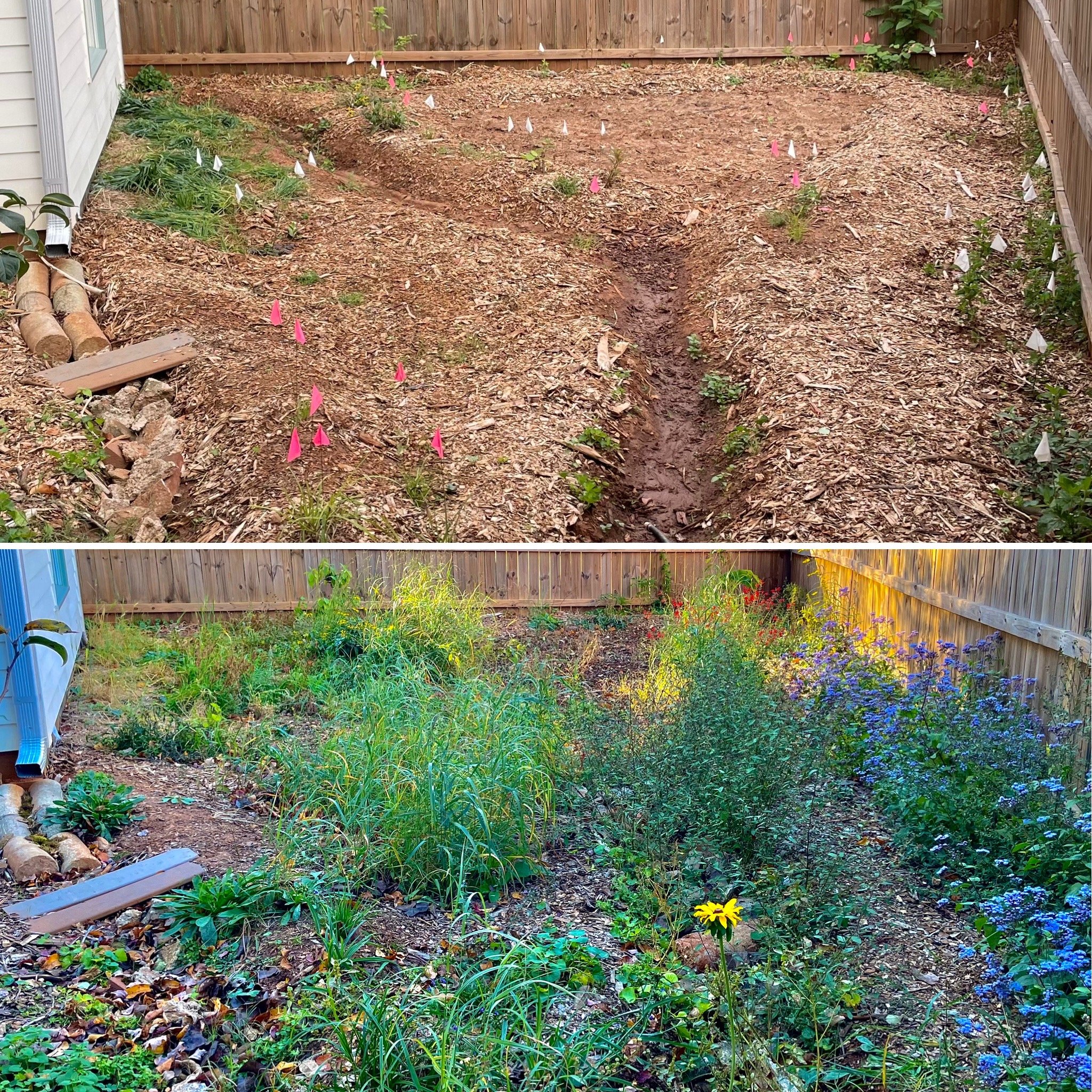
Rain gardens will often grow in quickly due to water availability the potential for optimized microclimates. At this site, installed natives show impressive growth only 3 months after installation.

Site planning is context specific - we consider the needs and parameters of each space before determining a design.

Removal of invasive species that would move into our construction is the first step.

A rain bed is dug out with berms around it to increase the holding capacity.
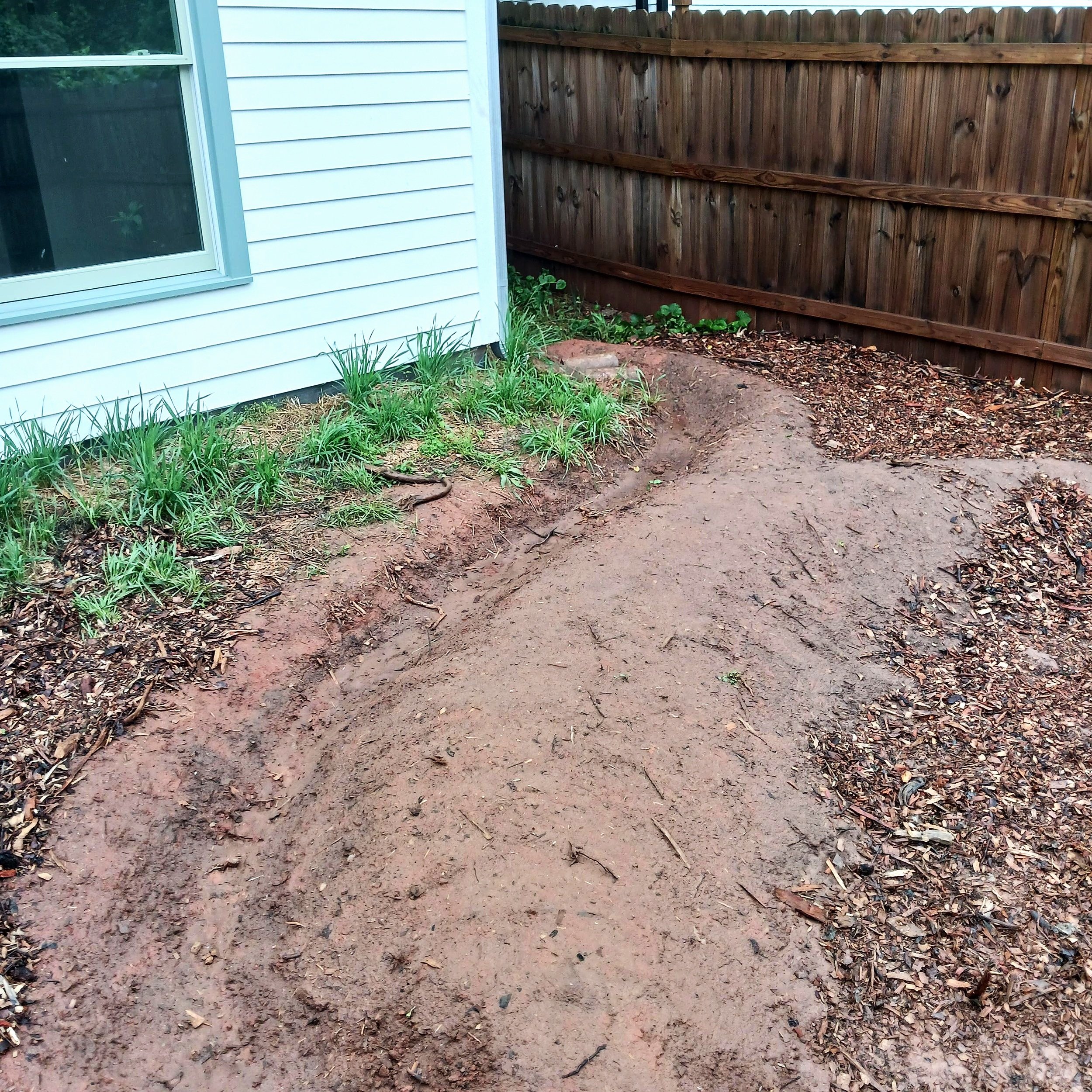
Dry creeks direct water from downspouts to the rain bed.
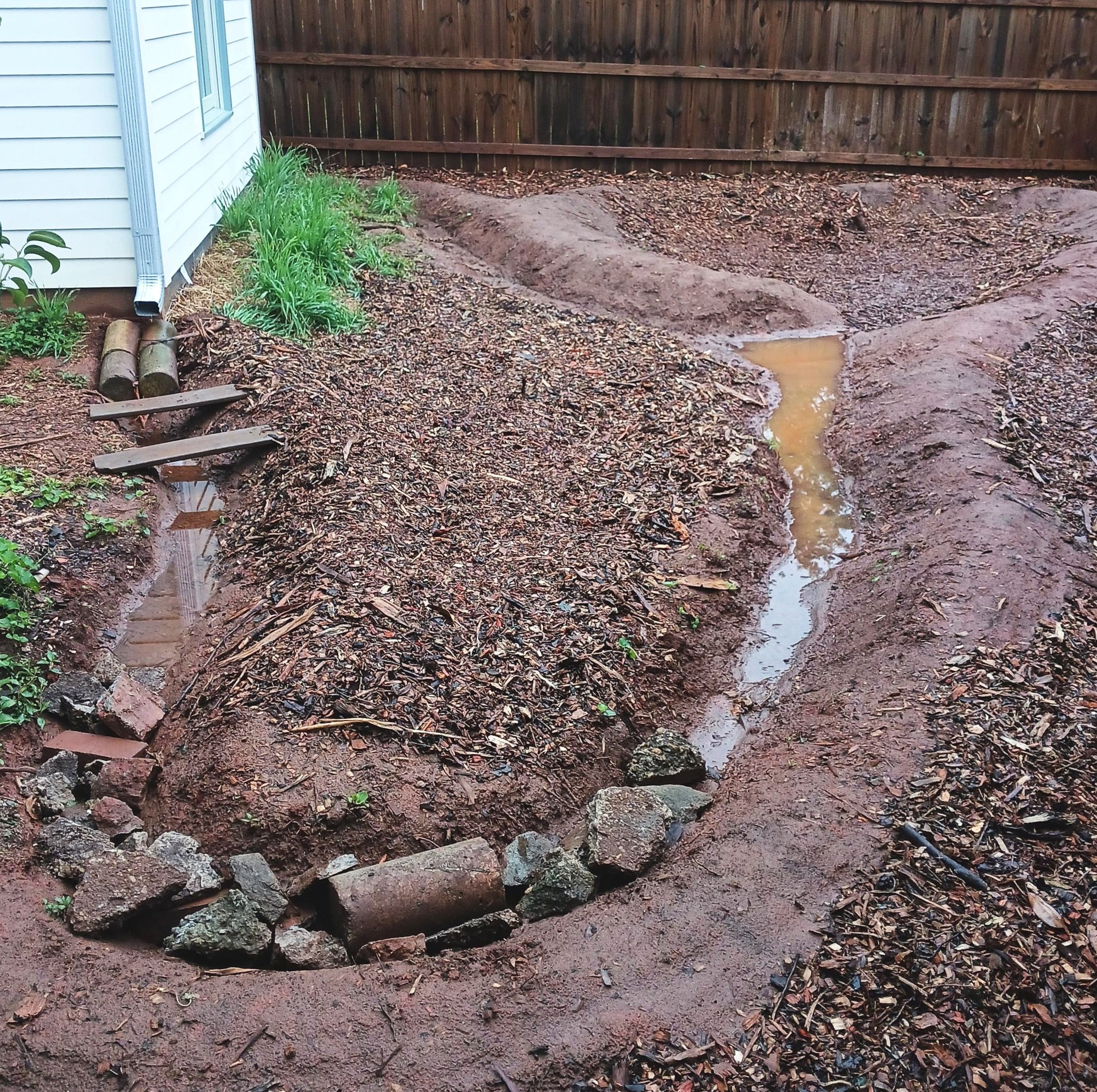
These dry creeks are stabilized with rubble from on-site, which acts like rip-rap to slow water and prevent spillage.

The berms act as walkways around the rain garden construction.


Plants are small immediately after installation, but will grow into different natural communities in and around the rain bed and dry creeks.
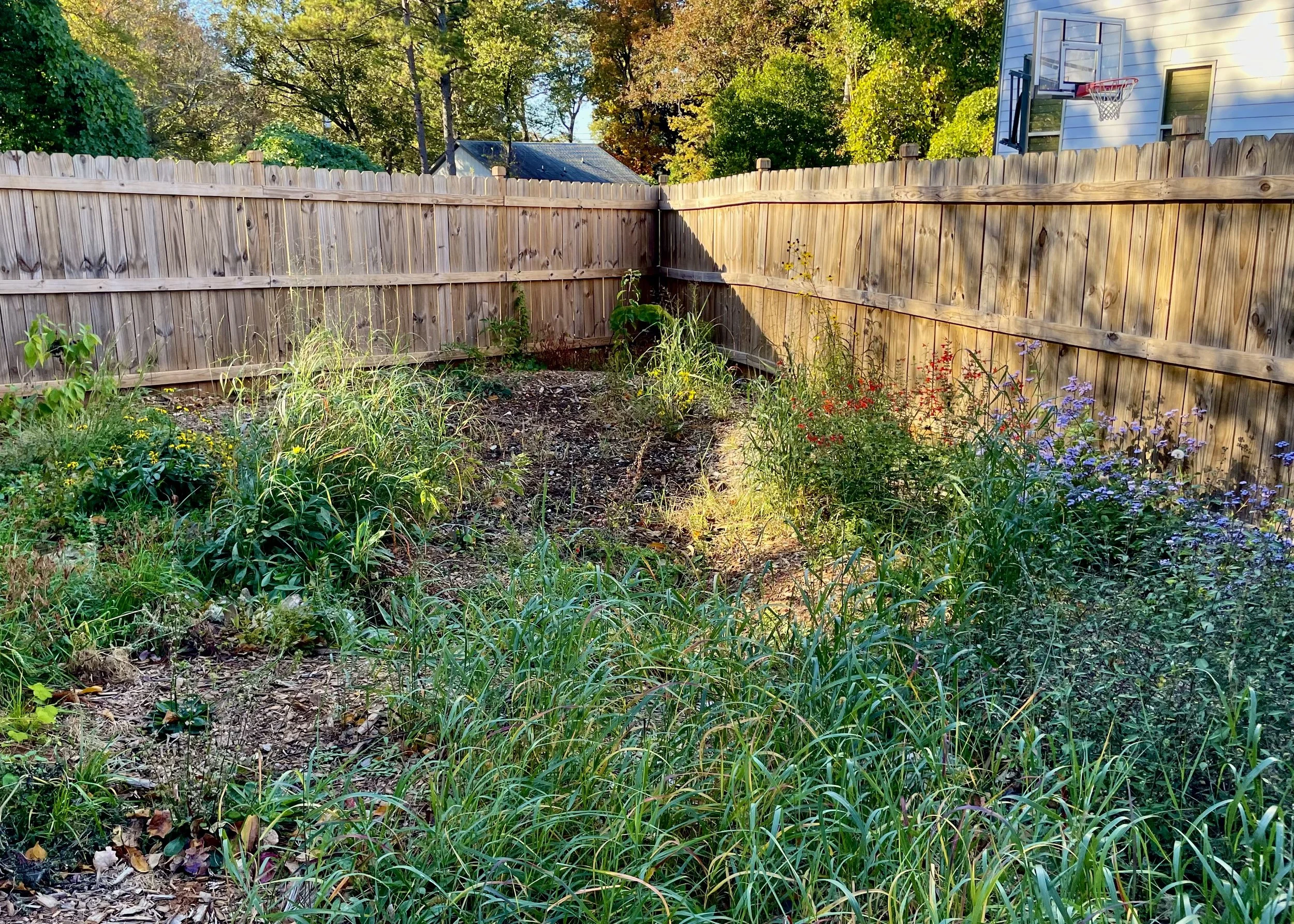

The rain bed and dry creeks are seeded with partridge pea, rushes, and other wet loving and drought tolerant plants. Woody plants are installed beyond the berm so that they can grow into the space without crowding the walkway.
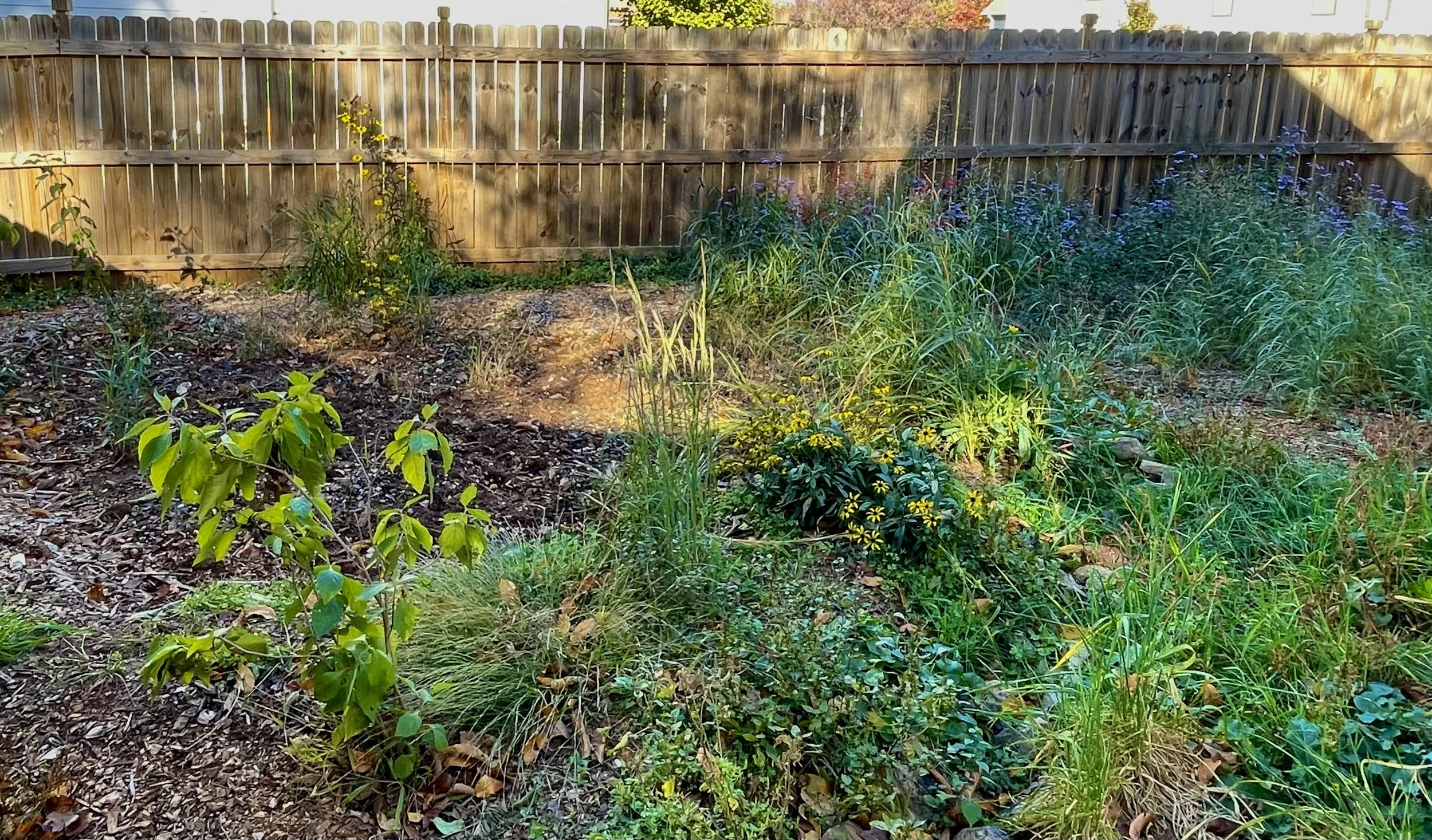

Rain gardens can have more than one bed.

Once the top bed fills, water overflows into the dry creek and collects in the deeper bottom bed.















